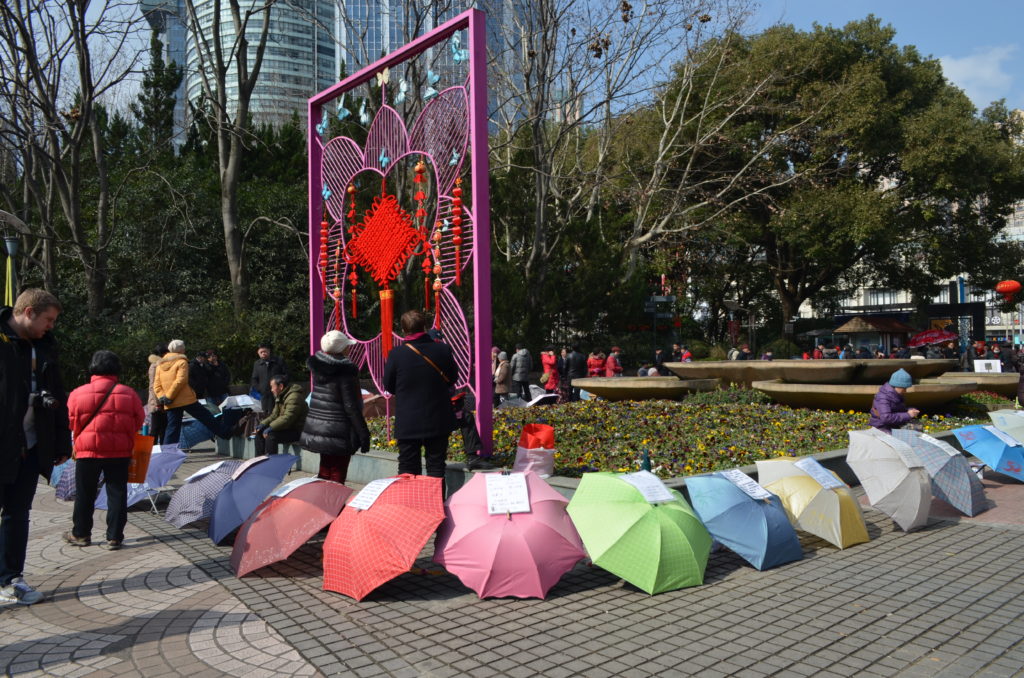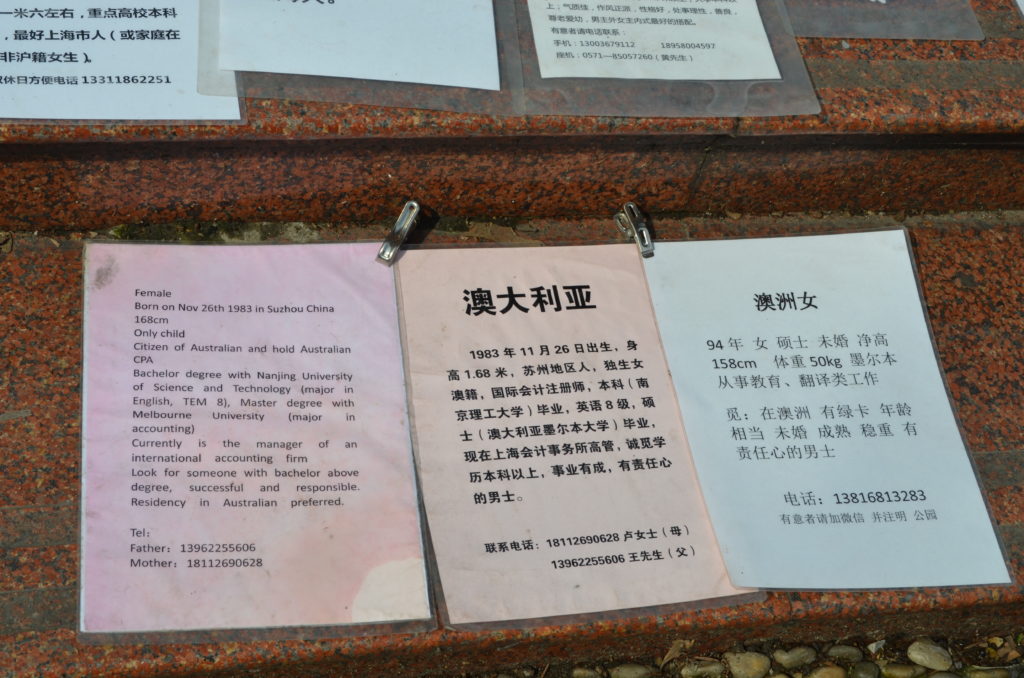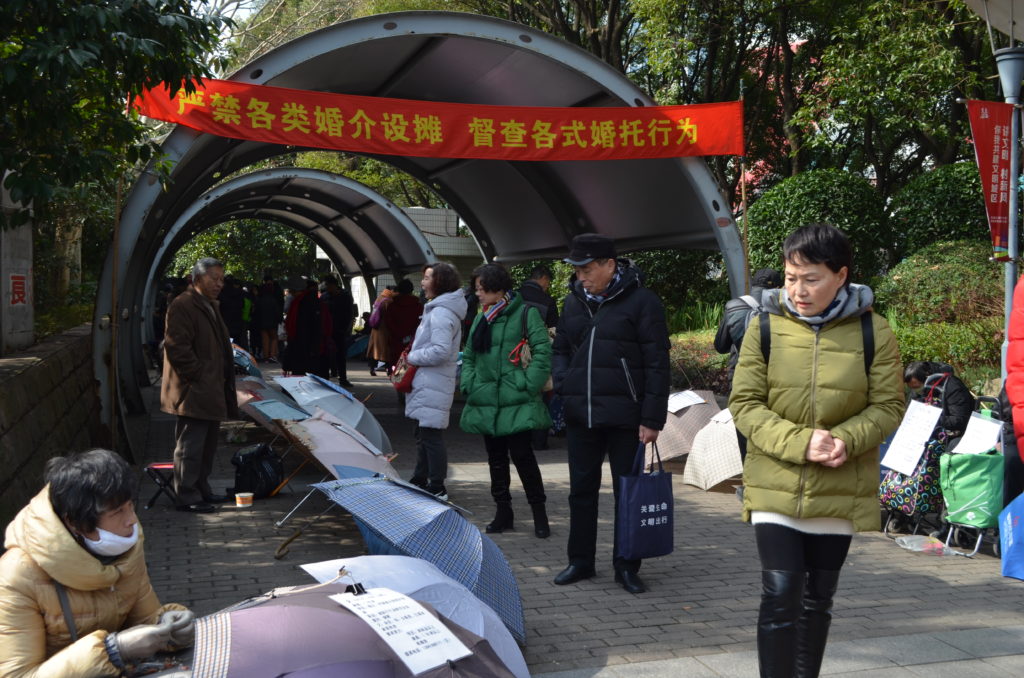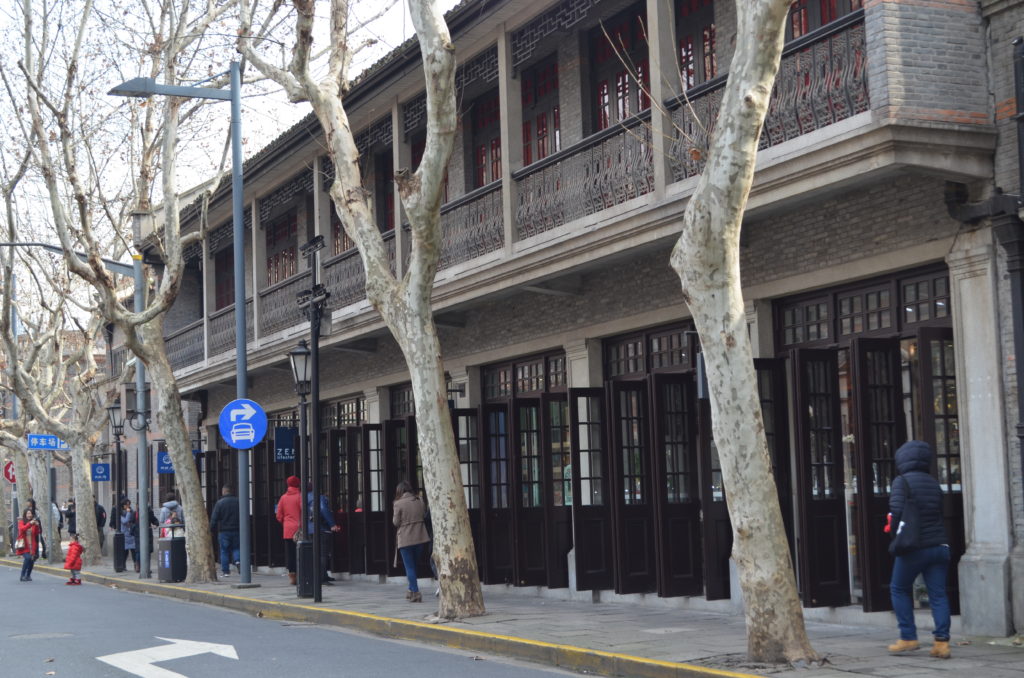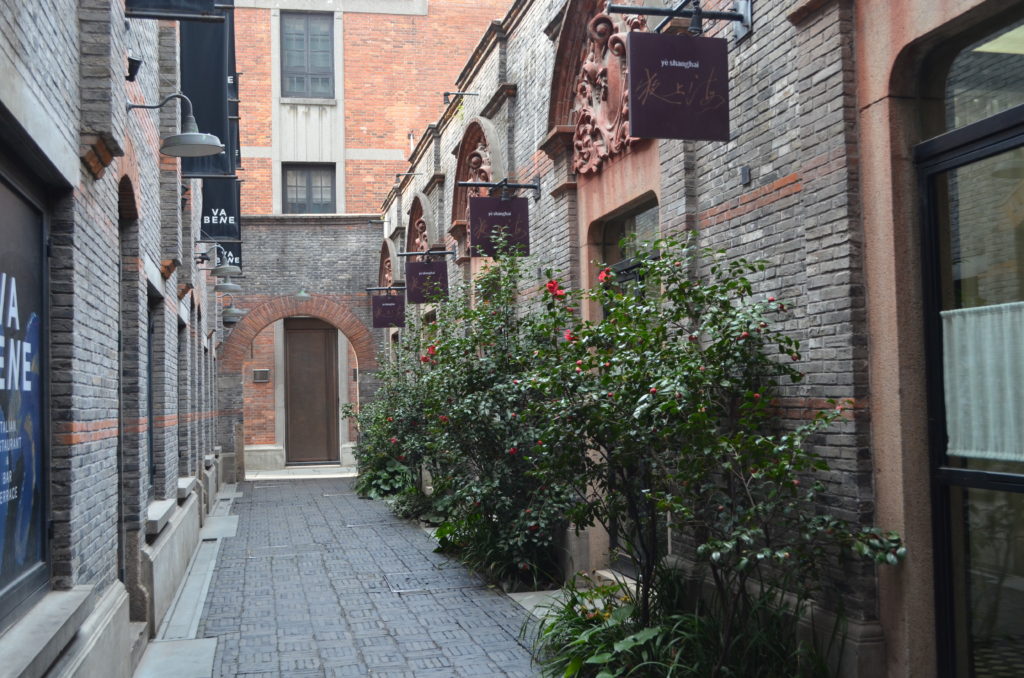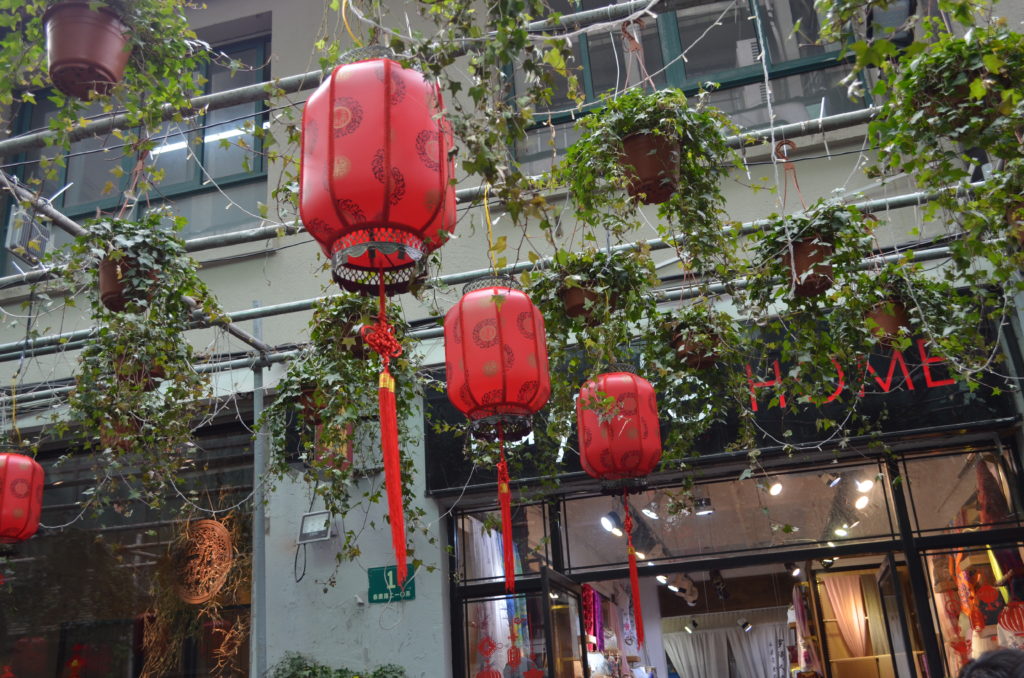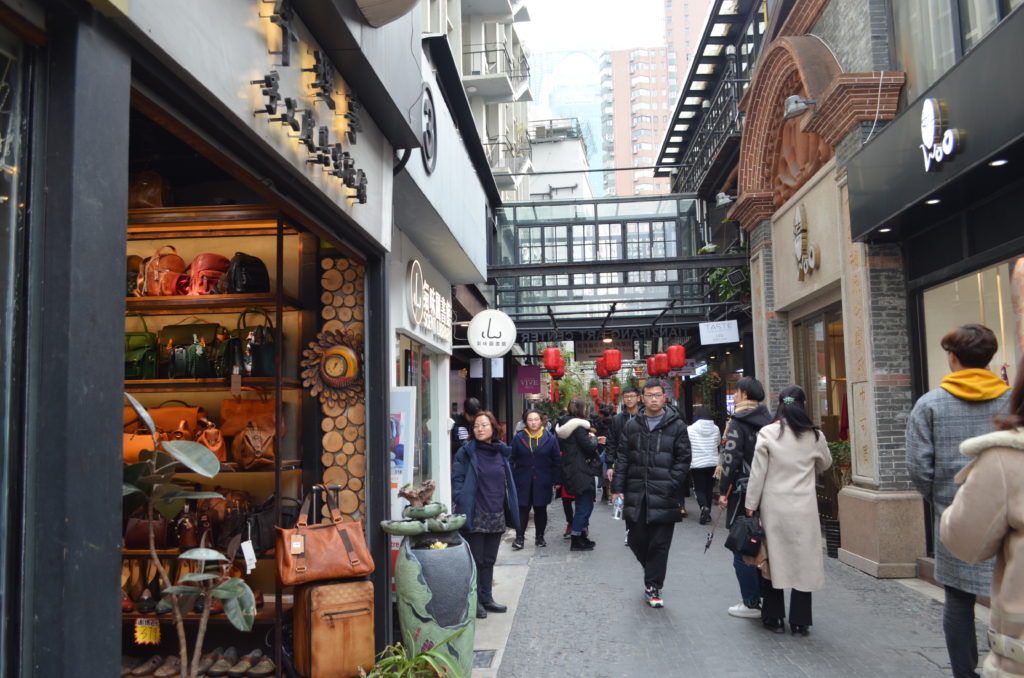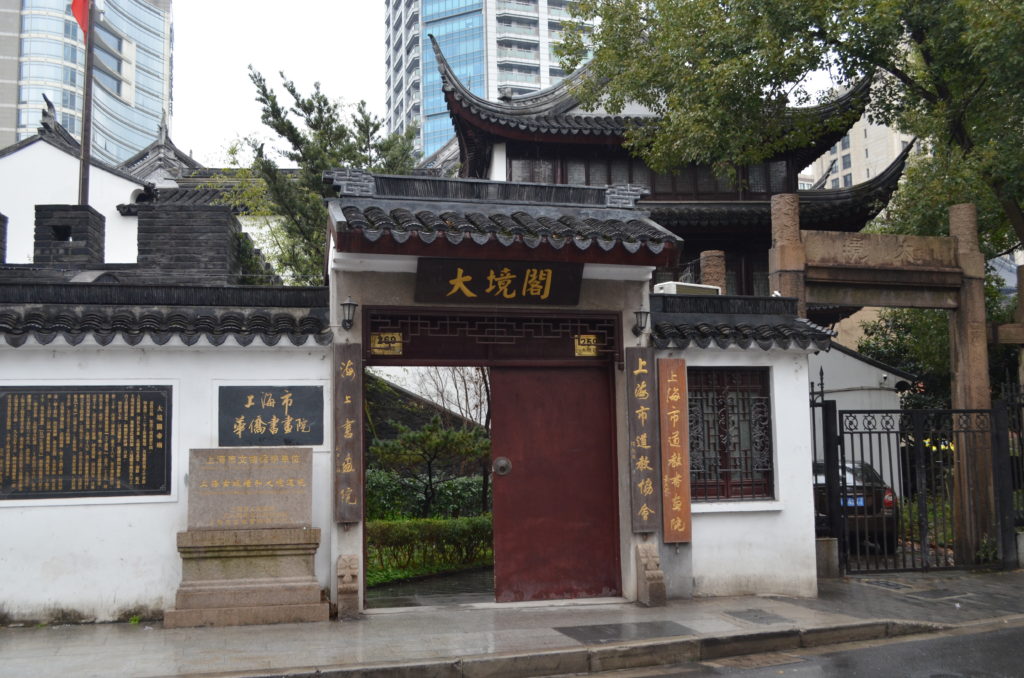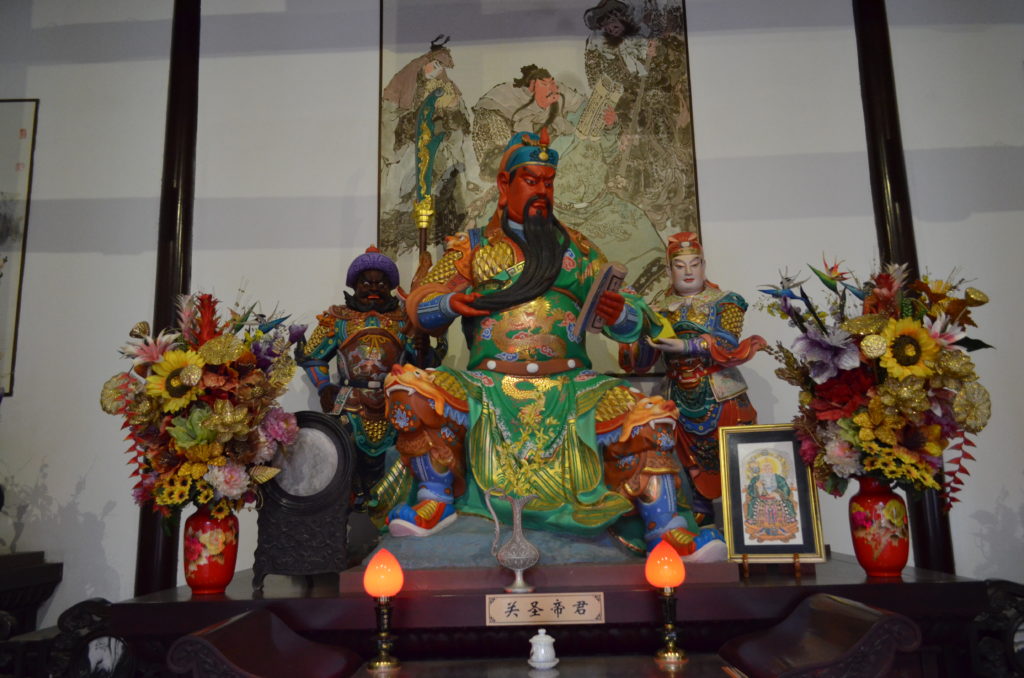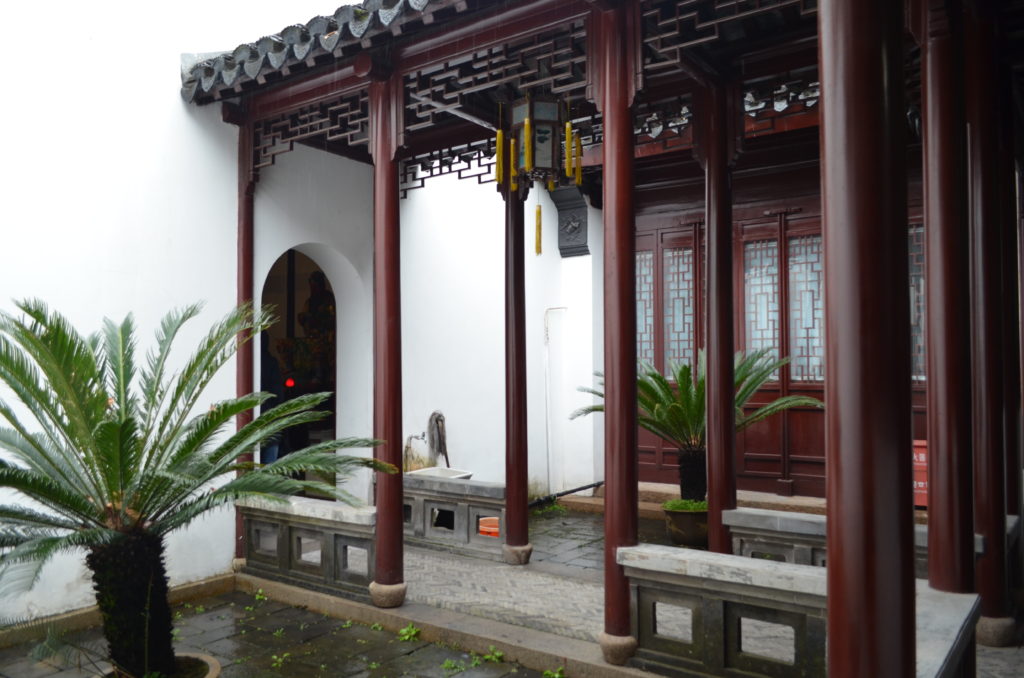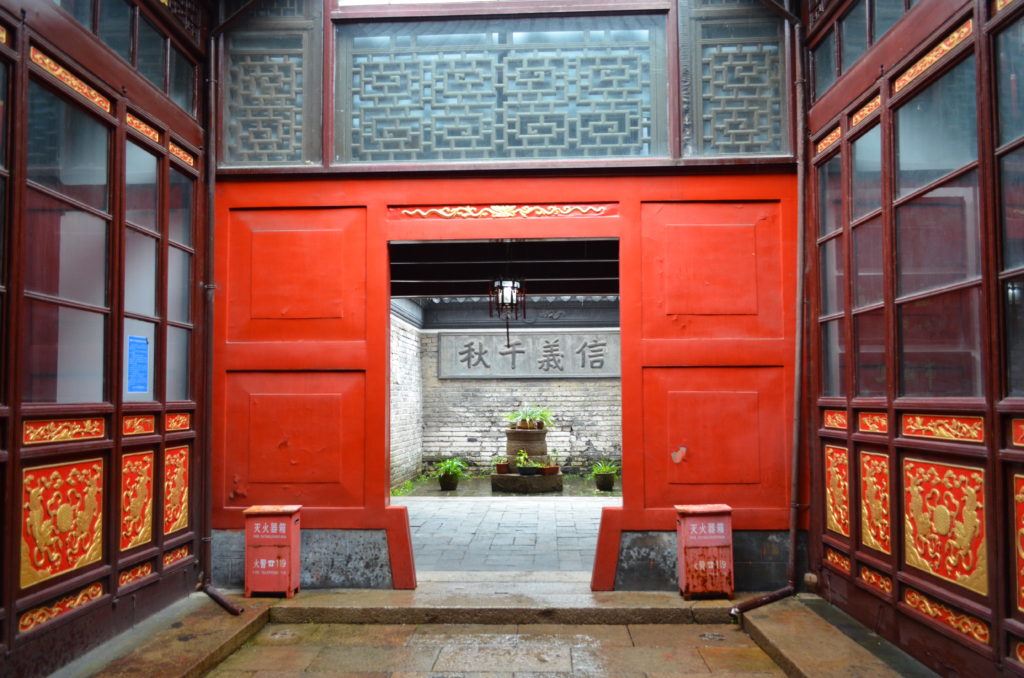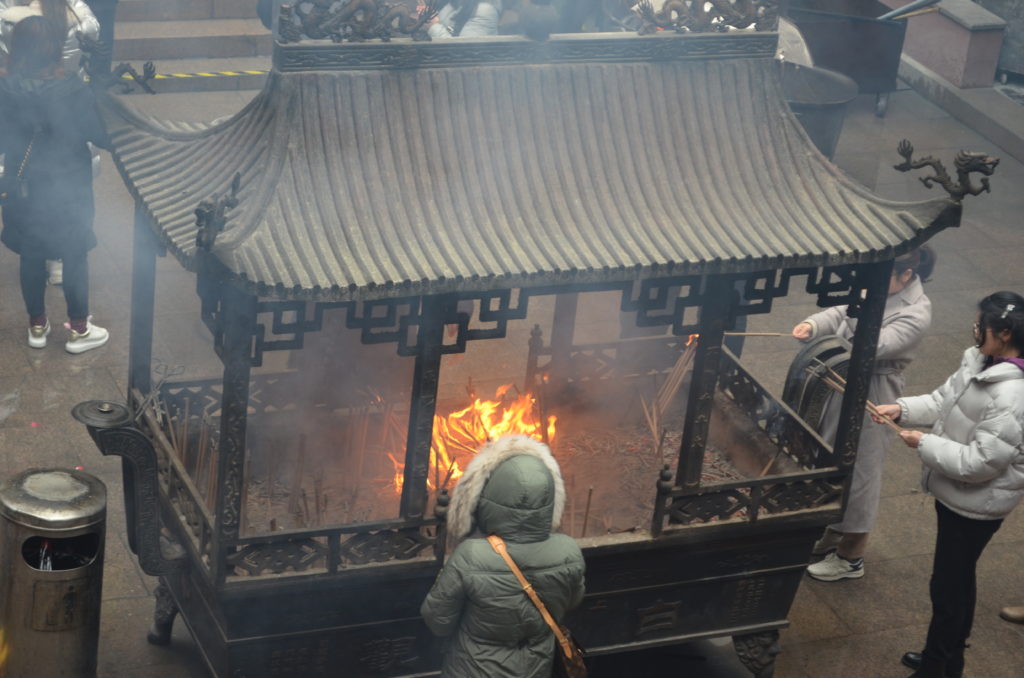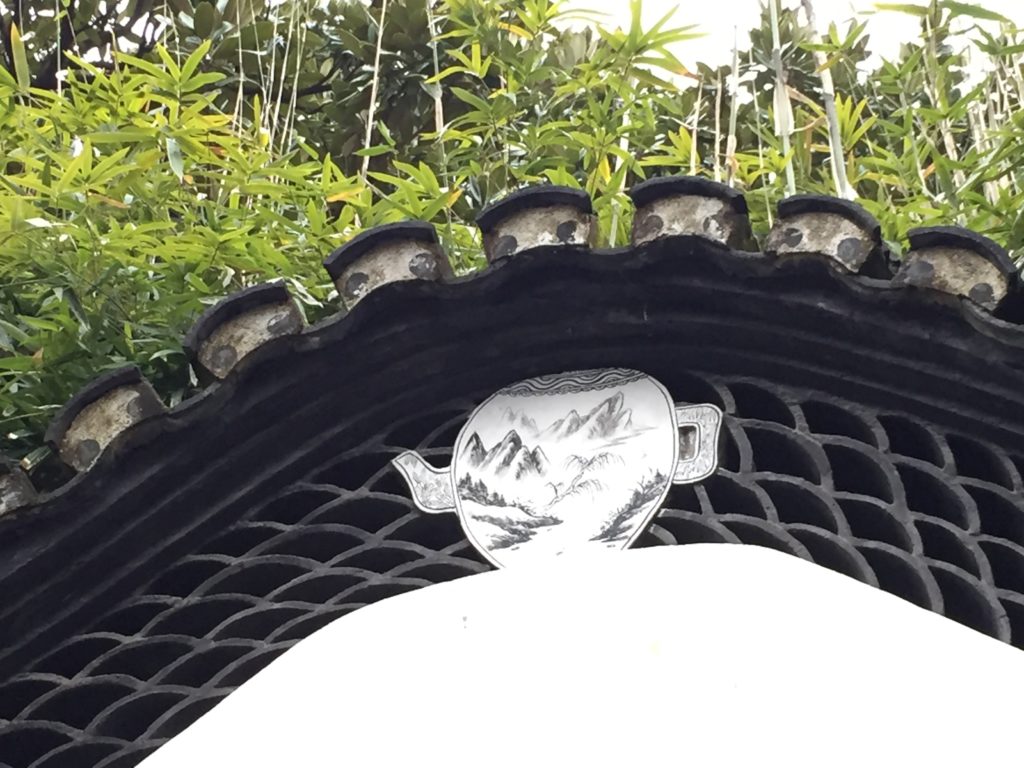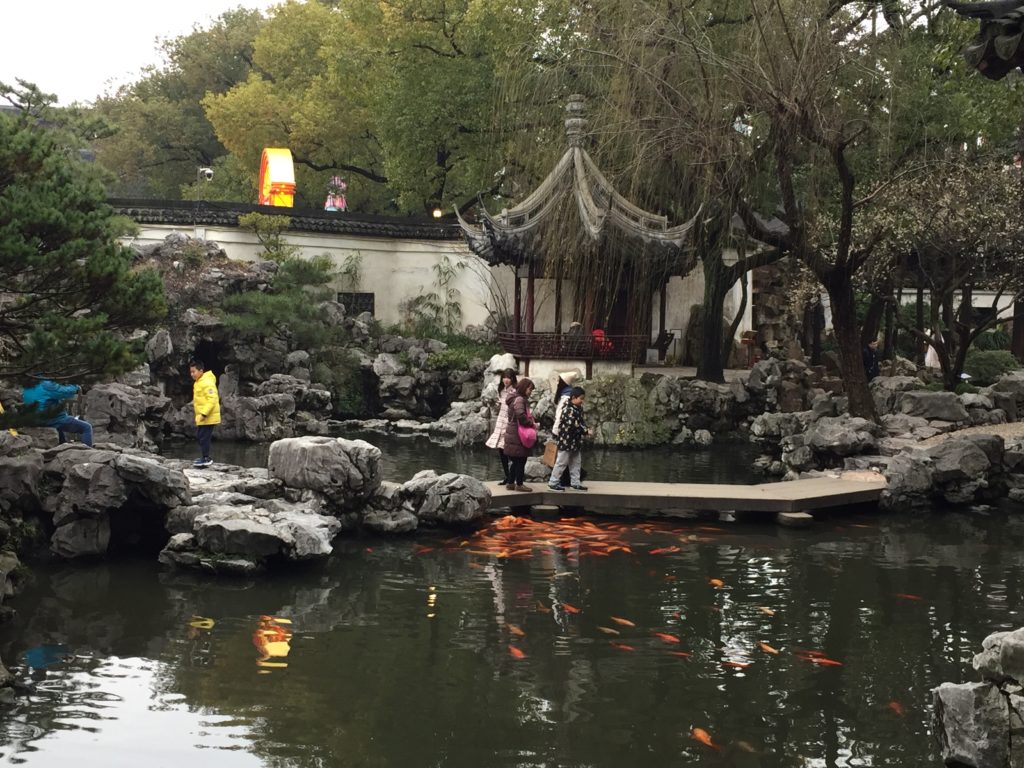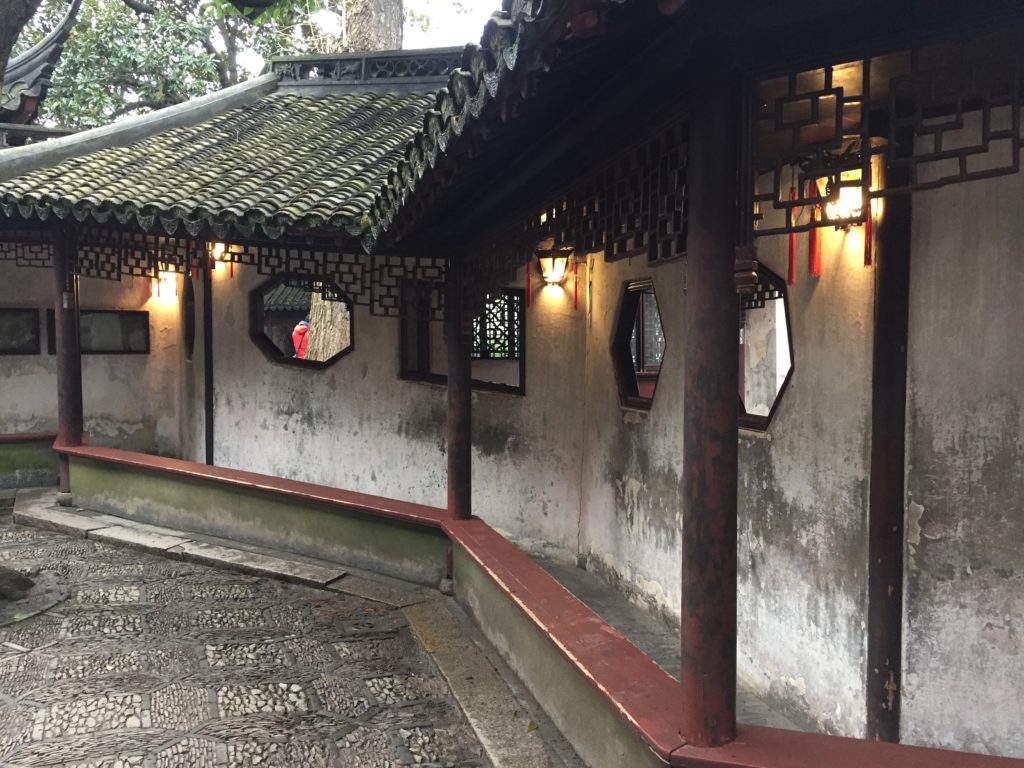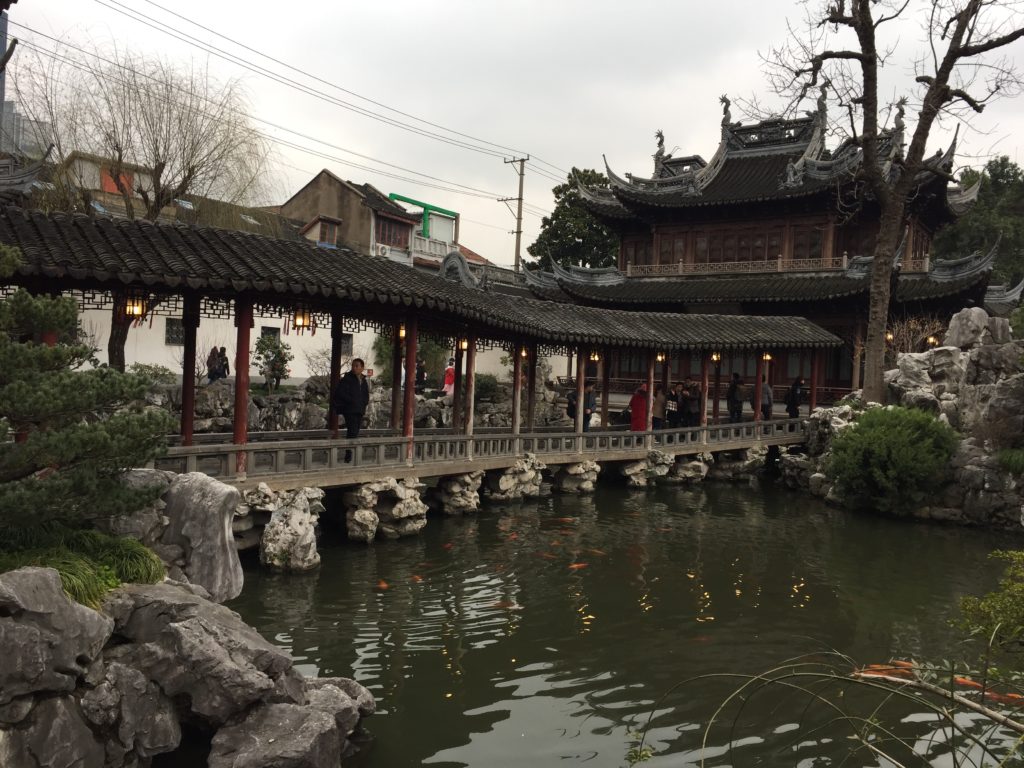Shanghai in Two Days

One of the most cosmopolitan cities in the world, Shanghai does not disappoint! We headed to this sleek, modern city after our visit to Beijing. (check out my full post). Shanghai is easily reachable by flight, which is a mere two and a half hours from Beijing. What I found so beguiling about Shanghai is its historic quarters, which are just as beautiful and spellbinding as its high skyscrapers. From the architecture of the Old City to the increasingly young and hip French Concession, Shanghai’s legacy is still present. This city inevitably reminds me of Singapore because of its modern efficiency and beauty. But beyond the sleek surface there is an impressive tale of how a port of call became a cosmopolitan metropolis. Here and there you can see the historic vestiges of a great city’s roots.
We stayed in the SSAW Boutique Hotel Shanghai Bund, which is centrally located to many tourist sites, including the Old City which is walkable. The hotel has a Thai inspired interior with a great breakfast spread (buffet) including Western and Chinese dishes. At breakfast you may hear birds chirping and you are not hallucinating! In the hallway off to the side of the dining area there are live birds set out in cages. What a lovely way to wake up in the morning with a cup of hot chrysanthemum tea and birdsong! Two evenings we also ended up ordering room service for dinner and the food was delicious, highly recommend the Shanghai style wonton soup and the Mapo Tofu. Note that all the drinks in the minibar, including an energy drink, soda, and mineral water, are complimentary and replenished daily!
Day 1 – People’s Park & The French Concession
Given it was Sunday, we decided to visit People’s Square and People’s Park first thing after breakfast. The park is particularly busy on the weekends, which makes it the perfect place to people watch. There are street performers, retirees who practice taichi, and families out for a stroll. Above all, the notorious “marriage market” takes place on the weekends. Given the rainy, winter weather I expected it to be either non-existent or smaller than usual. To my surprise, it was packed with many laminated notices laid out on the floor or affixed to colorful umbrellas. Parents and grandparents stood nearby and partook in animated conversations, exchanging phone numbers. With the aging population and imbalanced gender ratio (due to the long held one-child policy), the marriage market is a serious business.
From what I have heard, there are many “left-over” women, unmarried ladies in their late twenties and beyond, who are advertised in this weekly market. With the economic boom, increasingly educated and ambitious women are also becoming pickier when it comes to finding a spouse. Interestingly, there are even a few profiles that are written in English of Chinese expats living abroad with guarantees of American, Canadian, and European visas. Most notices also do not have photos attached, which is quite surprising! I suppose in China an intelligent, successful spouse is more important than a good-looking one?
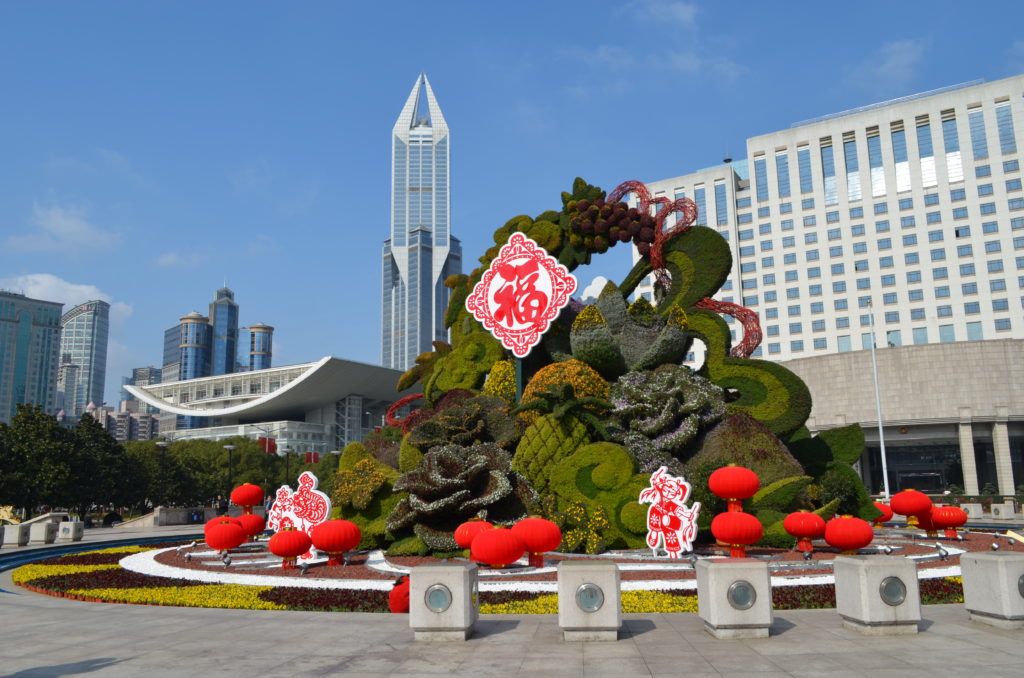
Keep in mind People’s Park is located right near two great museums, the Shanghai Museum and China Art Museum. We were pressed for time so we did not check them out right then. But on the third day I checked out the Shanghai Museum, which was fantastic! It houses an impressive collection of ancient artifacts from prehistoric times, gorgeous ceramics, calligraphy, and ink paintings. If you are interested in Chinese history, this is a must! I was not able to view the China Art Museum, which is the modern art museum. But I suspect due to censorship the artworks there are not quite as interesting and representative of the best Chinese modern art out there.
The French Concession
This area in Shanghai is one of the trendiest places these days. You will find many boutiques, cafes, and Western dining options here. Also, it is quite an interesting area to simply walk around to admire the unique architecture. You can easily imagine British and French expats living here back in the day as trade thrived in Shanghai. From the narrow alleyways to the tree lined boulevards, there is something romantic and slightly Parisian about this place. You can easily spend a whole day here and it encompasses two of the most popular districts, Xiantandi and Tianzifeng. Xiantandi especially reminds me of the historic quarters in Kobe, Japan where foreign residents used to live. In Kobe you can visit mansions that are architecturally fascinating, with antiques that showcase an aesthetic that is a mix of East and West.
You will find that in Tianzifeng, the inner streets are particularly narrow and tend to get crowded on the weekends. If you want to try some street foods this is a great place to do so! There are lots of artisans, tea shops, and accessory boutiques here which makes it the perfect place to get gifts and unique souvenirs. We ended up stumbling into the a two story tea shop where we purchased some excellent jasmine white tea and old white tea after a tasting.
Dinner at the Pearl Tower
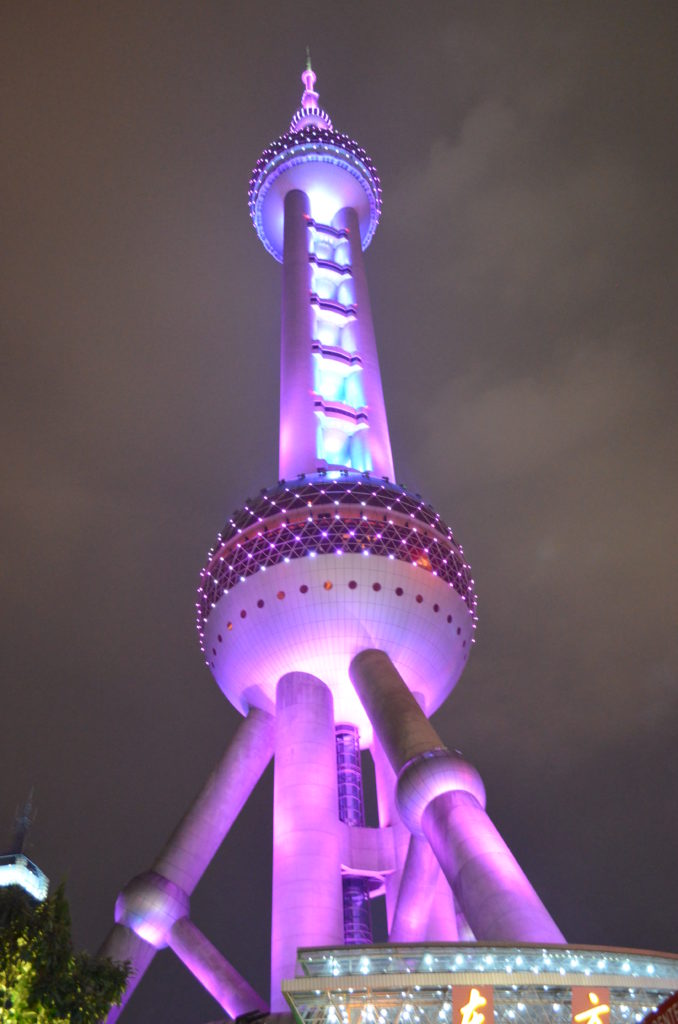
Thanks to my parents-in-law, Rob and I had a lovely dinner atop the revolving restaurant in the Pearl Tower! The restaurant is located right above the regular viewing tower. Highly recommend making a reservation as everything was sold out the evening we dined there. You need to call in to book a table but the receptionists do not speak English. Try and enlist the help of a Chinese speaking friend or the concierge at your hotel!
A dinner reservation also includes access to the regular tourist viewing areas with VIP access (you can skip the long lines)! This was my first time eating in a revolving restaurant so it was quite fun to see. The middle of the restaurant is where the buffet is laid out, which remains stationary. But the seating area, which surrounds the buffet, slowly rotates. This means one minute you can be close to the grilled meats and the next right by the salad bar! The views are stunning enough for a romantic night out and kids would also get a kick out of this! The buffet spread is pretty extensive including Chinese, Western, Indian, and Japanese dishes. There is also a dessert bar including an ice cream cart and a chocolate fountain.
Be sure to request a seat by the window. However, FYI even if they are all initially filled up the waitresses can move you there after they are left vacant. The views are incredible and since they rotate you can admire all of Shanghai from your seat including the central Pudong business district, the Bund, and beyond! After dinner walk down the stairs to check out the 360 views in the regular viewing deck.
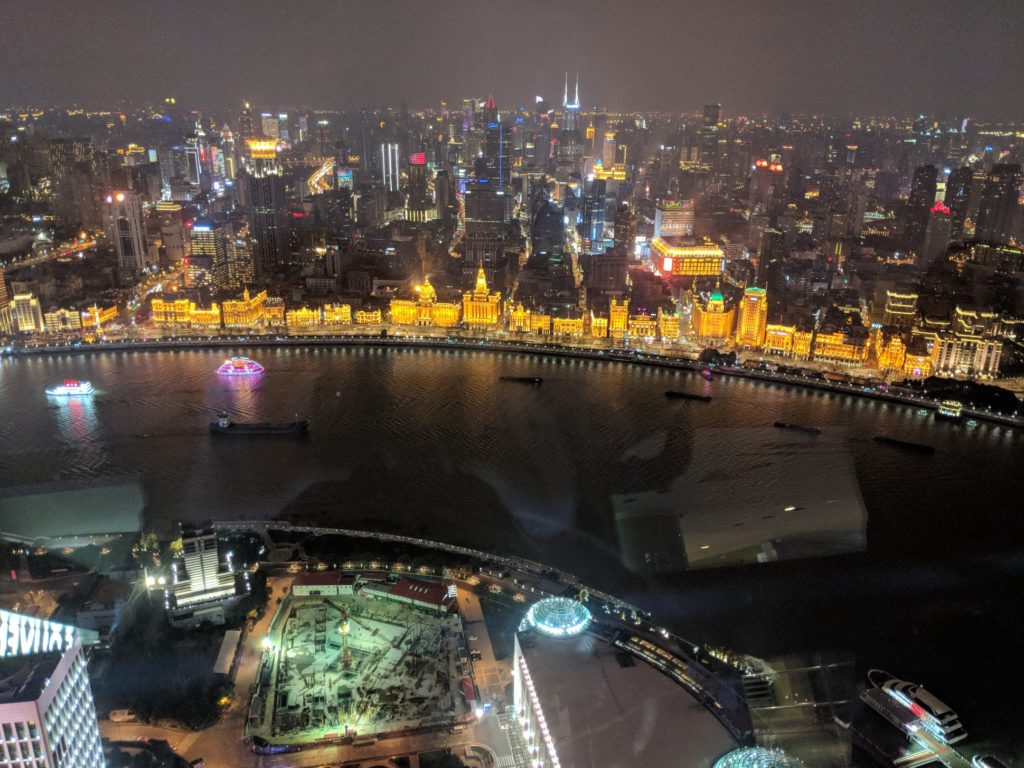
Day 2 – The Old City
Temples
Considering the proximity of our hotel to the Old City, we decided to check it out on our second day. We first came upon the Old City Wall and checked out a historic Taoist temple, Dajing Ge Pavilion. Although small, the temple was charming especially given the early spring rain that was falling outside. It was built between 1573 and 1620 and not much of the wall remains except for that which is attached to Dajing Ge. The wall was built to repel wokou invaders, which is translated literally as “Japanese pirates” but actually included a variety of ethnic groups. These groups had routinely invaded the coasts of China and Korea. (Admission is 5 yuan).
Just down the street from Daijing Ge is the City God temple of Shanghai. This complex is larger and absolutely impressive, do not miss it! Since we were there on a weekend it was bustling with locals, which made for great people watching. Upon entering the temple there is a courtyard with a large incense burner that billows out fragrant smoke. The sights, sounds and smells are entrancing. I recommend climbing the stairs to the second floor where you can enjoy a bird’s eye view of the courtyard and explore multiple smaller rooms with altars for specific deities. There are plaques outside each door explaining which deities are within. The deities range from protectors of health, intellectual pursuits, the arts, wealth, and the sea. Also on the lower level of the main hall, there is a large statue with various deities along the walls. Quite a sight to behold.
In ancient China, City God temples used to be customary. The purpose of these temples was to honor and house deities that were deigned protectors of a city. This ensured a city remained prosperous and protected from harm. Even in Singapore, where there is a strong China connection, to this day there exists a dedicated City God temple. In fact, it is located directly in front of our current apartment complex and was built in the 1900s!
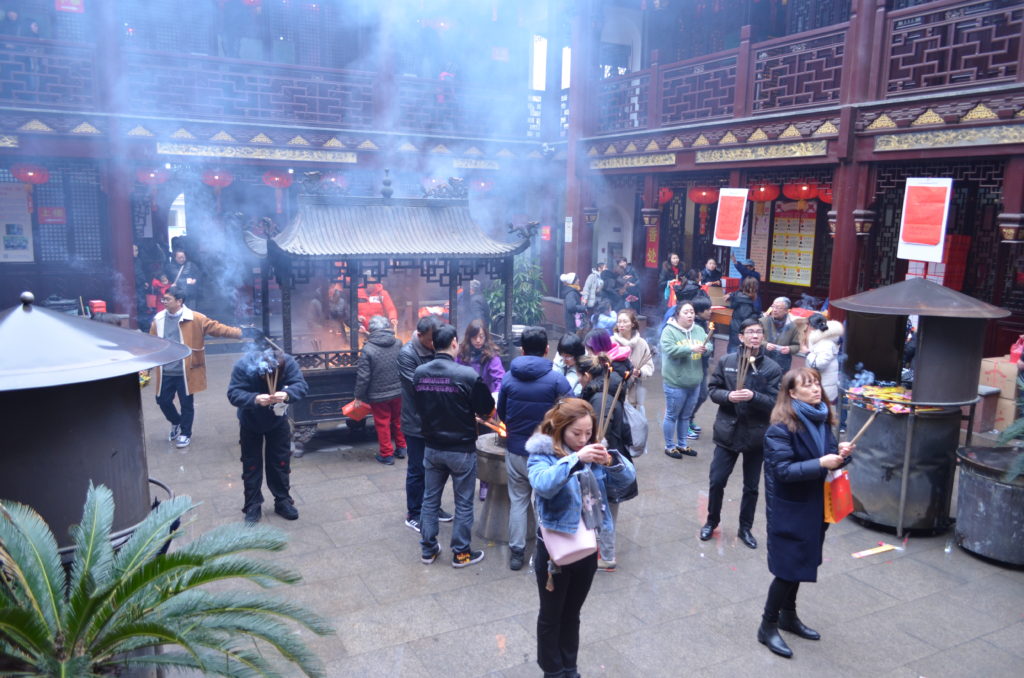
Old City
In order to get into the Old City itself, you need to walk through one of its multiple entryways. When we were there the Spring Lantern Festival was underway. As a result, on certain peak days and times we were required to buy a ticket and the area was heavily policed. Luckily the signs inside are translated into English and it is quite easy to get around. You will notice there are many jewelry shops on the outskirts of the district and they are amusing to walk through. They sell anything from engagement rings, gold jewelry, to jade. Inside the old city walls, there are a plethora of snack stalls selling sweets buns, and drinks and many gift shops selling beautiful wares. I ended up returning to purchase a lovely jade green, celadon tea set.
Make sure you take the time to admire the architecture in the Old City, it is stunning! Although it was colorfully decorated for the festival I felt it was a bit kitsch and overdone. The speakers were also repetitively blaring catchy, energetic songs. Nonetheless, the buildings themselves are graceful and make you feel like you are in some ancient Chinese tale. I would imagine during most parts of the year, without the crowds and neon decorations, the Old City looks charming.
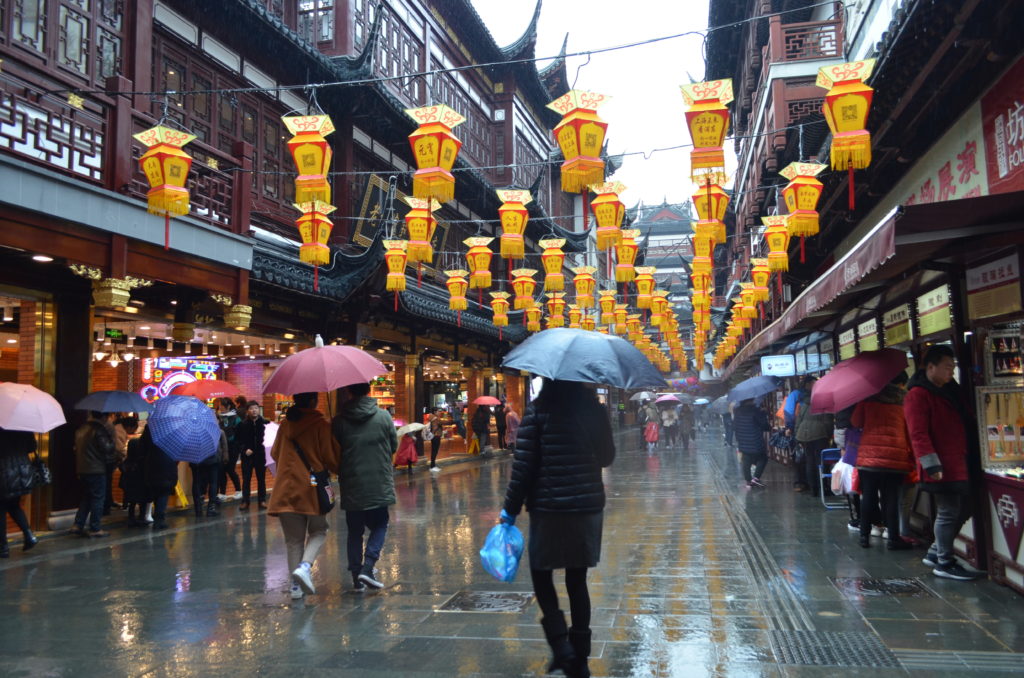

Huxinting Tea House
After browsing through a few stores, follow the signs to the Yu Garden, a gorgeous area surrounded by a koi pond. This was probably my most favorite part of the Old City as it is a peaceful respite from the throngs of people. There is a beautiful old teahouse, Huxinting, located in the middle of the lake that serves premium, high grade tea. Since it was drizzling we decided to have tea inside and spent a few hours drinking white and oolong tea. Absolutely recommend taking the time to spend an afternoon here! The interior of the tea house is old and quaint, with little nooks and crannies where you can sit with a friend. We ended up tucked into the corner of a rounded sitting area and were served complimentary plates of kumquat and sweets (e.g.- chocolate, sweet rice dumplings and cookies). They also provided us with a thermos of hot water to re-steep our tea. Complete bliss!!
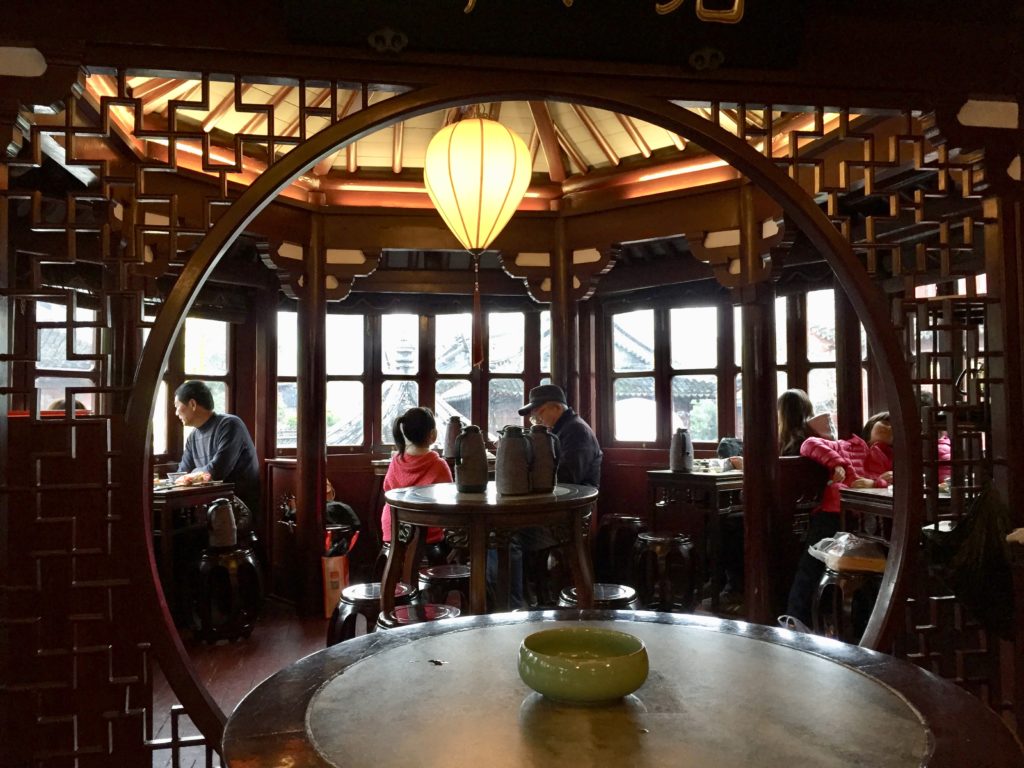
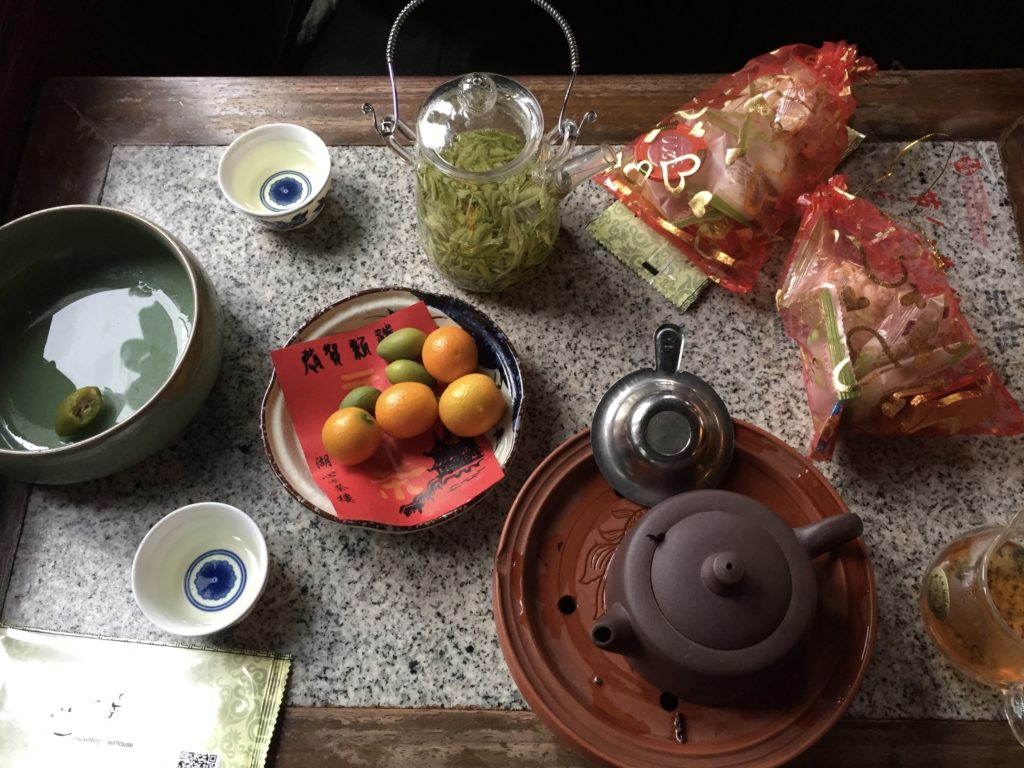
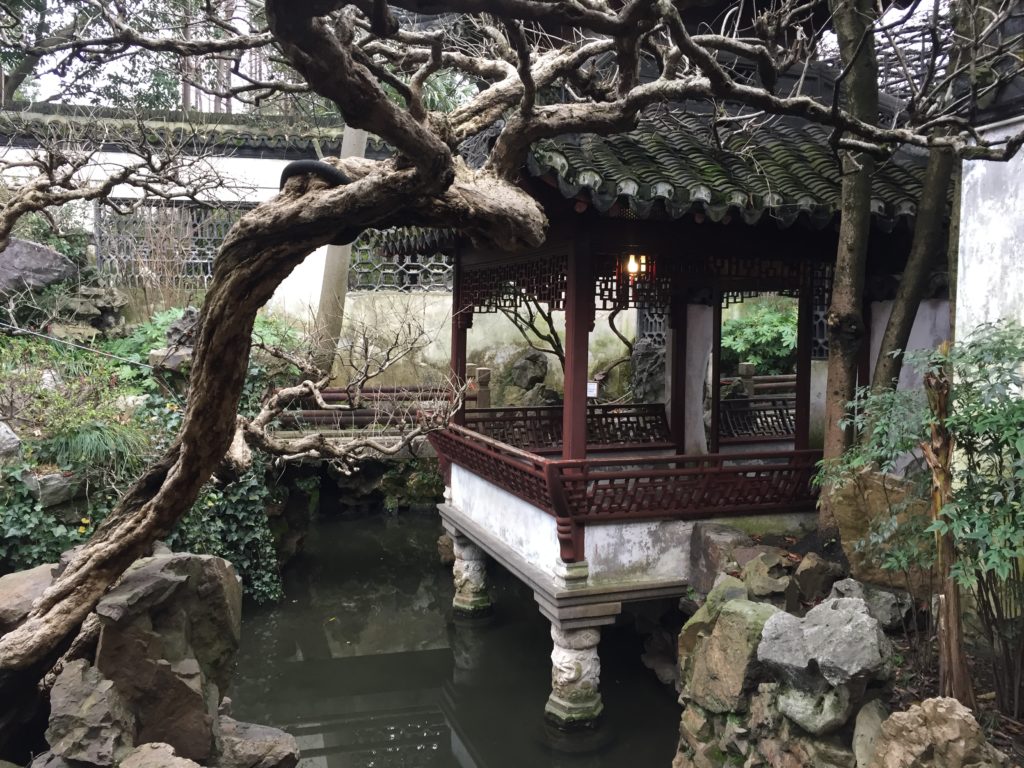
Yu Gardens
After a delicious cup of tea at Huxingting, continue to walk across the bridge to the gardens. Ahead you will see the gate where you can purchase an entry ticket. The extensive gardens were built in 1559 during the Ming dynasty and was the largest and most ambitious of its kind. However, the garden’s extravagance is what ultimately led to the ruin of its owners. With meandering paths, ponds, bridges, courtyards, and pavilions, the Yu Gardens are exquisite. Since it was late February when I visited, there were plum blossoms in bloom everywhere signaling the arrival of spring.
As it is quite large, take the time to wander and ponder the beauty of the place. Each and every view of the garden is like a painting. After walking through it became clear to me how the Japanese gardens came to be. The ancient Chinese gardens clearly were sacred places of reflection and spaces to witness the passing of the seasons. The light green leaves and spring rain left a deep impression on my soul. No matter the season be sure to visit! Note that the garden closes early and in February the last ticket sold was 4:30 PM. Manage your time in the Old City wisely to make sure you are able to see this beautiful place. I noticed many Chinese tourists decided to skip the gardens so it was a peaceful place to take refuge from the crowds.


